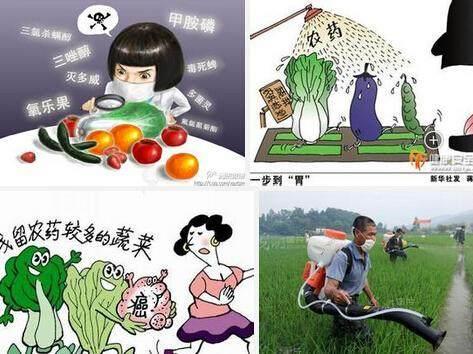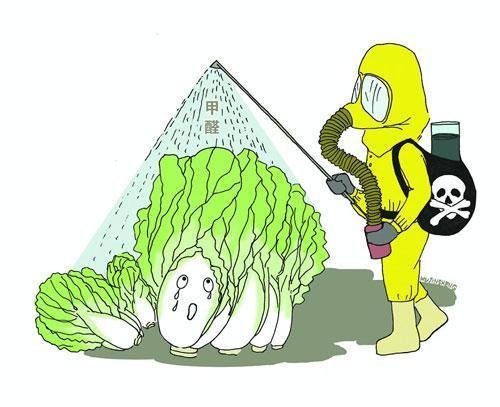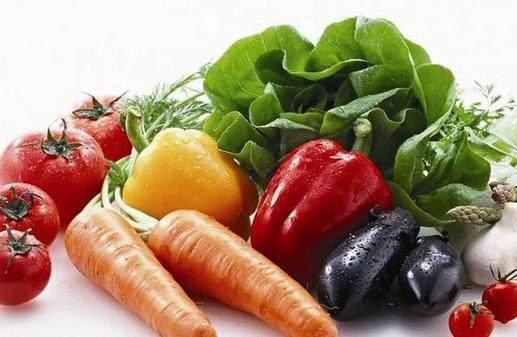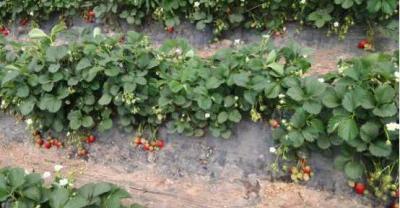Vegetables and fruits pesticide residues on what harm, how to deal with the peace of mind to eat!
Pesticide residues do great damage. According to experts, pesticide poisoning can be divided into acute and chronic poisoning. Acute poisoning can indicate poisoning symptoms within 24 hours, including muscle spasm, nausea, vomiting, diarrhea, loss of vision and dyspnea. It is known that thousands of people die as a result of pesticide poisoning every year, and local poisoning is caused by excessive pesticide residues in vegetables. Chronic pesticide poisoning is usually not easy to detect, because pesticides have a process of accumulation in the body, even if they suggest symptoms of poisoning, because some symptoms, similar to headaches and tiredness, are often ignored by people, once it is too late. Not only that, but also try to prove that pesticides are teratogenic and carcinogenic to the human body. relevant medical inquiries show that the incidence rate of malignant tumors has increased all the year round, which has nothing to do with pesticide residues in vegetables. Pesticide residues, as toxic substances, have the power to modify genetic genes and cause fetal deformities, which are much greater than the damage caused by tobacco and alcohol.

So what to do with the peace of mind and peace of mind when we just mix the food?
Generally speaking, leek, cabbage, pakchoi, spinach, cabbage and other leafy vegetables have relatively large pesticide residues. First, because the pests of leafy vegetables are relatively serious; second, because their development cycle is short, pesticides have been on the market before they have time to differentiate. However, there are few pesticide residues in rhizome vegetables such as potatoes, carrots, yams and so on.
Soaking and scrubbing with water can reduce pesticide residues, and the longer the soaking time, the less pesticide residues. Try to prove that 15% 60% of pesticide residues can be removed by soaking vegetables in tap water for 10 minutes and then slightly scrubbing them. Soaking in fruit and vegetable detergent will wash pesticides more effectively. After the detergent is diluted with water at the ratio of 1 to 200, the pesticide residues can be reduced by 50% to 80% within 10 to 60 minutes; then, after a little scrub and rinse with clean water, the pesticide residues can be removed fundamentally.

High temperature heating can also differentiate pesticides, such as scalding with boiling water or stir-frying in oil. Try to prove that some heat-resistant vegetables, such as cauliflower, beans, green peppers and celery, can be washed and scalded with boiling water for a few minutes, which can reduce pesticide residues by 30%. After high-temperature cooking, 90% of pesticides can be removed from vegetables.
Wash vegetables with rice water, but it is best to use rice water for the first time or twice, because the outside of rice contains potassium, so the water for rice washing for the first time or two will be weakly acidic, but then it will be alkaline, and pesticides will not be toxic until they are in acidic substances. Sunlight can cause local pesticides in vegetables to be differentiated and crushed. According to the determination, vegetables in the sun for 5 minutes, inorganic chlorine, inorganic mercury pesticide residue loss of up to 60%.
Of course, peeling vegetables can also increase pesticide residues, but it can also lead to the loss of vitamins and minerals in the peel. Therefore, the best way to remove pesticides is to soak novel fruits and vegetables with detergent for 10-15 minutes, or soak them in tap water for 30-60 minutes and rinse them with clean water.

If you like it, just like it!
- Prev

Disinfection and maintenance of dental implant instruments
Disinfection and maintenance of implant surgical instruments is an important link in oral implant clinical nursing. It concerns both patient and physician safety, prevention of cross-infection,...
- Next

The following 10 kinds of pesticides are prohibited in fruit trees. Have you been hit by fruit farmers?
Ammonium phosphate: do not use in peach trees. Methyl dichloride: it is prohibited in all kinds of fruit trees. Dichlorvos: drupe fruit trees are prohibited. ...
Related
- Fuxing push coffee new agricultural production and marketing class: lack of small-scale processing plants
- Jujube rice field leisure farm deep ploughing Yilan for five years to create a space for organic food and play
- Nongyu Farm-A trial of organic papaya for brave women with advanced technology
- Four points for attention in the prevention and control of diseases and insect pests of edible fungi
- How to add nutrient solution to Edible Fungi
- Is there any good way to control edible fungus mites?
- Open Inoculation Technology of Edible Fungi
- Is there any clever way to use fertilizer for edible fungus in winter?
- What agents are used to kill the pathogens of edible fungi in the mushroom shed?
- Rapid drying of Edible Fungi

